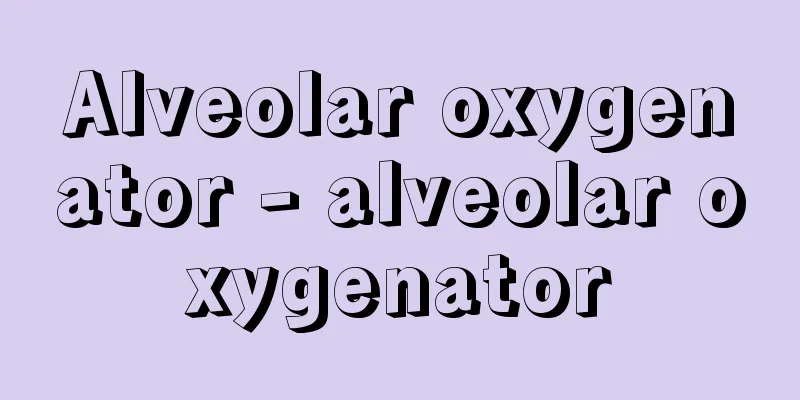Paul Ehrlich

|
German bacteriologist and pioneer of chemotherapy. Born in Straelen, Silesia, he studied medicine at Breslau and other universities. Ehrlich had been deeply interested in the use of various dyes in cell research since his studies. He focused on the oxidation and reduction of dyes, especially their relationship with oxygen, from the results of fixed cells and vital staining, and published the basis of the method used today in white blood cell analysis, in which differences in various cell granules can be seen by staining with aniline dyes. Koch's discovery of the tuberculosis bacillus on March 24, 1882, greatly inspired Ehrlich, and he began research on acid-fast staining of the tuberculosis bacillus, inventing his own staining method in the same year. In 1883, he discovered the diazo reaction of urine from typhoid fever patients. In 1890, he joined Koch's Institute for Infectious Diseases, but contracted mild tuberculosis and traveled to Egypt for three years to recuperate, after which he returned to the Institute for Infectious Diseases and assisted Behring, who was researching diphtheria toxin and antitoxin, in establishing a method for quantifying toxin and antitoxin. Also, during this period, he proposed an ingenious hypothesis called the side-chain theory in order to explain the nature of various antigen-antibody reactions, beginning with the mechanism of antibody production, and immunology developed around this side-chain theory. From 1896 to 1899, he served as director of the State Serum Institute, and in 1899 he became director of the State Institute for Experimental Therapy in Frankfurt am Main, and at the same time also served as director of the Georg Speyer Institute. Many brilliant people from all over the world gathered under him, and this led to the groundbreaking leap from dye therapy to chemotherapy. From his research and expansion of the side chain theory, he became convinced of the existence of harmless chemicals that bind to microorganisms and kill them, but do not bind to living organisms. To this end, he first investigated dyes, and with the help of his assistant, Kiyoshi Shiga, he discovered a red dye of the benzidine group that he named trypan red, which was effective against equine Cadera disease trypanosoma, and then a blue dye called trypan blue, but this dye therapy did not develop further. Next, he noticed that the arsenic compound Atonesil was an anti-spirochetal drug, elucidated its chemical structure, and created and developed its derivatives, eventually discovering the 606th compound, diamide dioxy arzenobenzine (trade name Salvarsan or No. 606), which he used to successfully treat syphilis in humans. Ehrlich is said to have said that the rights to this invention were shared between him, Alfred Bertheim (1879-1914), who was in charge of the synthesis, and Hata Sahachiro, who was in charge of the precise animal experiments. In 1908, he was awarded the Nobel Prize in Physiology or Medicine for his work on immunology, in 1910 he was made a Member of the Royal Society of Great Britain, and in 1914 he became Professor of Experimental Therapeutics at the University of Frankfurt. [Tsunezaburo Fujino] [References] | | | | | |Source: Shogakukan Encyclopedia Nipponica About Encyclopedia Nipponica Information | Legend |
|
ドイツの細菌学者、化学療法の先駆者。シレジアのシュトレーレンに生まれ、ブレスラウその他の大学で医学を修めた。エールリヒは、修学中から各種色素が細胞研究に利用されていることに強い関心をもっていた。そして固定された細胞と生体染色の成績から色素の酸化と還元、とくに酸素との関係に着目し、アニリン色素による染色によって各種細胞顆粒(かりゅう)の相違が認められるという、今日、白血球分析に使われている方法の基礎を発表した。1882年3月24日のコッホの結核菌発見はエールリヒに大きな刺激となり、結核菌の抗酸性染色の研究を始め、同年、染色法を創案した。1883年には腸チフス患者の尿のジアゾ反応を発見した。1890年コッホの伝染病研究所に入るが、軽い結核にかかり、3年間エジプトに転地療養して、伝染病研究所に復帰、ジフテリア毒素と抗毒素に関する研究をしていたベーリングを助け、毒素と抗毒素の定量法を確立した。また、この時期に抗体産生の機序から始めて、各種の抗原抗体反応の本態を説明するために、側鎖説という巧妙な仮説を提起、免疫学はこの側鎖説をめぐって発展する。 1896~1899年、国立血清研究所所長を務め、1899年にはフランクフルト・アム・マインの国立実験治療研究所所長となり、同時にゲオルグ・スパイエル研究所所長を兼ねた。彼のもとには世界各地から多くの俊秀が集まり、色素療法から化学療法への画期的な飛躍が生まれることになる。彼は側鎖説の研究、拡大から、微生物とは結合してその微生物を殺すが、生体とは結合しない無害な化学物質の存在を確信した。そしてそのために初めは色素について調べ、志賀潔(きよし)助手によって、ウマのカデラ病トリパノソーマに有効なトリパンレッドと名づけたベンチジングループの赤い色素を、続いて青い色素トリパンブルーをみつけたが、この色素療法は発展しなかった。ついでヒ素化合物アトネシールが抗スピロヘータ剤であることに着目し、その化学構造を明らかにして、その誘導体をつくって発展させ、第606番目にジアミド・ジオキシ・アルゼノベンジン(市販名はサルバルサンまたは606号)を発見、これによってヒトの梅毒治療に成功した。この発明権についてエールリヒは、合成を担当したベルトハイムAlfred Bertheim(1879―1914)と、精密な動物実験を担当した秦佐八郎(はたさはちろう)との3人が共有するものだ、といったと伝えられる。 1908年、免疫に関する業績によりノーベル医学生理学賞を受け、1910年イギリスのロイヤル・ソサイエティー会員、1914年フランクフルト大学実験治療学教授となった。 [藤野恒三郎] [参照項目] | | | | | |出典 小学館 日本大百科全書(ニッポニカ)日本大百科全書(ニッポニカ)について 情報 | 凡例 |
Recommend
Manila - Manila (English spelling)
The capital of the Philippines. It is located in ...
Colombo, C. (English spelling) ColomboC
…Italian navigator and discoverer of the New Worl...
Patres Apostolici; Apostolic Fathers
The Church Fathers who were active from roughly th...
Matsudaira Tadanao - Matsudaira Tadanao
A feudal lord in the early Edo period. He was the...
Southampton (English spelling)
A city in southern England, United Kingdom. A unit...
Palmer, DD (English spelling) PalmerDD
... In the early modern period, the relationship ...
Nikko Road
One of the five main roads. Also known as the Nikk...
Brunel, IK (English spelling)
…This revolutionary large ship was launched in En...
Northern Rhodesia (English spelling)
Former name of Zambia, a country in south-central...
Minase [village] - Minase
A village in Ogachi County, in the southeastern ti...
Buchner, Eduard
Born: May 20, 1860 in Munich Died August 13, 1917....
Fair Competition Code
Based on Article 10 of the Unfair Premiums and Mis...
Hogen Rebellion
A civil war at the end of the Heian period. Empero...
Ludwig Edler von Mises
Austrian economist. After graduating from the Uni...
Nutcracker - Щелкунчик/Shchelkunchik
Ballet. 2 acts, 3 scenes. Music by Tchaikovsky. T...









